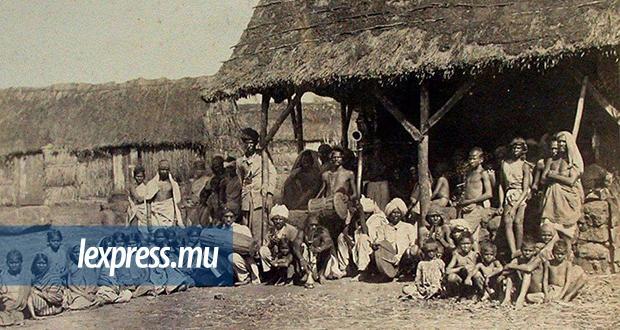By Nivriti Sewtohul
Africa-Press – Mauritius. In the beginning there were two nations. One was a vast mighty and magnificent empire, brilliantly organized and culturally unified, which dominated a massive swath of the earth.
The other was an undeveloped, semi-feudal realm, riven by religious factionalism and barely able to feed its illiterate, diseased and stinking masses. The first nation was India. The second was England. ” Alex Von Tunzelman : “Indian Summer. ”
“Immigrants were literally kicked out of India,” says and writes Dr Shashi Tharoor in his bestselling book “The Inglorious Empire”, following his speech in Oxford University and which went viral.
Harsh words, but they throw light on the pushing out of some three million Indians to the shores of Mauritius and other British colonies within a century.
The British came to India to do trade. Soon they started indulging in politics and embarked upon the conquest of the country with violence and oppression unheard of before.
Racial superiority was the prime motive. India was the richest country in the world in the 18th century, representing 23% of world trade while England was at 1.8% only. In 1947, England represented 10% whereas India 3% only.
European countries knew about the existence of tremendous riches in the Indian sub-continent and competed with each other to reach there by sea as the land route was forbidden to them by the Turks.
The Portuguese, the Dutch, the French and the British were at each others’ throats to assume supremacy. Britain would have the final word through its East India Company (1600-1878) of sad memory.
Through that Company, Britain would de-industrialize India to industrialize itself. The shareholders were eager for profits. No stone would be left unturned to satisfy their greed.
The Indian textile industry was the most advanced in the world over centuries. The finest silk and other products were exported to all accessible countries.
In the Roman days, all gold was flowing out of the city to India for the women were so keen at getting the best attire. Britain would destroy that industry by preventing Indians from producing finished textile goods.
Soldiers destroyed the looms, tortured the artisans and even went so far as to cut off their thumbs so that they could not practise their trade. They were the famous “julahas”, quite a few of whom would find their way to Mauritius in the 19th century to form the “jolha” community synonymous to Muslims.
India would become an exporter of cotton and indigo and an importer of finished textile goods from England. The people fled the region to seek shelter in the princely states and even abroad.
The Indian steel industry, shipping, etc. were all undone. Railways were introduced to better exploit the country by hauling goods from the hinterland and carrying soldiers inland.
It cost nine times more per mile to build than in the USA and Canada, the money coming from India. The East India Company imposed its own system of land settlement by encouraging large land ownership, like the “zamindari” system, in order to levy taxes more easily.
The actual owners were ousted by the very heavy rates of taxation imposed on them. Before the coming of the British, the rate was at 15%, often waived during droughts, famines or simply weddings.
With the British, it was always above 15% till 45%, and even as high as 85% and 90% with no regard for extreme economic situations. Taxes, often converted to fixed rates of rent whether profits were made or not, were spread on anything ranging from salt to weddings.
Duties were imposed on every effort a person made to earn a living. Worse still, the money thus harvested was sent for use in England. Such attitudes engineered famines.
During the British Raj, the first famine in the 1770s took away half of the population of Bengal. Large scale grain exports were done even when famines prevailed.
No relief came from the Authorities who believed in free trade, the Malthusian concept that surplus population must perish to come to its own equilibrium with no government interference.
The national budget made no provision for unexpected costs. It prevented charity of any kind to help the dying. Around 35 million people died of inanition during the twenty decades the British stayed in the country.
Sir Winston Churchill even orchestrated the famine of 1943 when 4.3 million people died in Bengal because local grain was shipped to Greece and elsewhere in Europe to create stocks for soldiers engaged in WW II.
The East India Company maintained a large army of some 400,000 soldiers. They were mainly Indians with British officials at the head. Indians were never given high ranks or commanding positions in the army.
They maintained peace at home and went to conquer new territories to secure the safety of the empire which had to be kept growing. Mauritius was a case in point.
Its strategic position was vital to the empire for whoever owned the island owned India had said Lord Minto, Napoleon Bonaparte and others. The Indian soldiers were present in overwhelming numbers during the conquest of Mauritius in 1810. All the money to pay the soldiers and the ships came from India. Hence, the men, the materials and the money were Indian and the victory was British.
In the rush to dismantle the industries, the expropriation of properties which brought the Rani of Jhanssi in the forefront during the first war of Indian independence in 1857, and draining of resources to Britain, millions of Indians escaped the depredations and oppressions by going to settle in other countries where decent living was in view.
Some three million crossed the forbidden seas to start a new life in colonies near and far. Mauritius received the greatest number. Half a million came in staggered numbers over a period of 90 years, starting from 1835.
As the de-industrialisation proceeded, the trend was followed by the outward movement. New lands, new inhabitants, and more products for use by Britain which had made rules the territories had to abide by.
The East India Company had tried sending Indian convicts to the new territories. With the abolition of slavery, the indenture system, first tried in the new tea plantations of India, the Nilgiris, for example, was introduced.
It was contractual labour accepted as a haven against the worst type of human oppression ever recorded in human history. It is said that the tortures to extract money from the penniless Indian would pale the German Gestapo of the Second World War.
The de-classification of the East India Company Papers has shed new light on the immigration of Indians to Mauritius, and La Reunion for that matter. They came from the richest country ever with highly developed sciences such as mathematics, physics, medicine, architecture, universities like Nalanda, town and rural development and unequalled accommodating religious fervour.
One famous American writer has even gone so far as to say that there is no field of life that the Indian brain has not touched. Hence, the Indians came with their culture that has stood the test of time and with developed brains.
Slowly but surely, they have made their way up the socio-economic ladder with no hatred for the other communities through their proverbial tolerance. They have ended up making a nation out of a colony very much appreciated in international quarters.
The history of Mauritius takes a new turn with the information coming from the East India Company Papers. Indians were forced out of their homeland. They had regrets but stood up to face the future as they had always done during other occupations back home.
Historians like Dr Shashi Tharoor, Dr Sanjeev Sanyal from Singapore are in the forefront to set Indian history in its right perspective. Mauritius represents an important cog in the new history that has come up. Definitely, Pax Indica is on the offing.
https://lexpress.mu/node/365806
For More News And Analysis About Mauritius Follow Africa-Press







